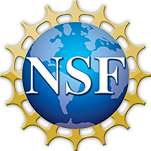Abstract
Marine sediments harbor an estimated 50% of all microbes on earth. However, the identity, distribution, and metabolism of deep-sea benthic microbes are poorly understood. We collected sediment cores at 10 sites across 300km off the San Francisco Coast spanning 100-4500m water depth and 0-200cm sediment depth. Using amplicon sequencing of 16S rDNA and metagenomic sequencing, we investigated trends in microbial community composition across physicochemical gradients, and evaluated metabolic capabilities of detected microbes. Microbial community similarities associated with water and sediment depth, correlating to changes in pressure, temperature and oxygen concentrations of overlying water, as well as pore water ammonium, phosphate, and nitrate concentrations. Many microbes were from potentially novel lineages: an average of 34% of amplicon sequence variants (ASVs) present in each sample were <90% similar to the 16S rRNA gene of representative genomes, and up to 13% of ASVs found in one sample were <70% similar to representatives. Metagenomic sequencing of surface sediment from 3500m water depth using a novel assembly method combining 10X genomics and barcoded short reads resulted in 24 MAGs with >70% completion, <10% contamination, and a 16S rRNA gene. The 9 most complete MAGs had average amino acid identities <65% to their best 16S rDNA representative genome match. These MAGs indicate potential for sulfate and sulfite reduction, nitrification, and general heterotrophic growth. These results indicate microorganisms distantly related to those previously characterized, dominated our sediment samples and mediate important conversions in carbon, sulfur, and nitrogen cycles in this environment.

